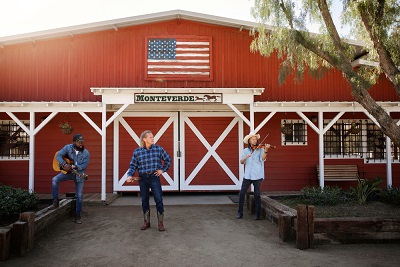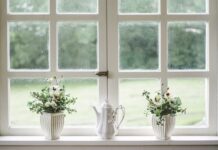Let’s be fair dinkum. On an Australian property, your farm shed is the unsung hero. It’s far more than a spot to park the ute and stack a few hay bales. It’s a workshop, a machinery garage, a secure storage facility for expensive equipment, and often a shelter for livestock. When a storm rolls in off the Indian Ocean or the summer sun beats down relentlessly, the last thing you need is to worry about your shed’s integrity.
A flimsy structure won’t cut it out here. You need a shed built with purpose, designed for Australian conditions, and engineered to last. This guide walks you through the key elements of a truly durable farm shed so your investment protects your assets for years to come.
What Does “Durable” Really Mean on an Australian Farm?
Durability isn’t just about a shed not falling over. It’s about standing strong against a specific set of challenges:
- The Sun: Relentless UV exposure that can degrade materials and fade colours.
- The Wind: Everything from gusty fronts to cyclonic forces that test every bolt and panel.
- The Rain: Driving rain that seeks out tiny gaps, causing leaks and internal corrosion.
- The Dust: Fine, abrasive dust that works its way into moving parts such as roller doors.
- The Load: The weight and value of what you’re storing—from heavy harvesters to livestock.
- Salt Air (Coastal Sites): Accelerated corrosion from salt-laden winds, common across much of WA’s coastline.
Understanding these forces is the first step in building a shed that can handle them.
The Pillars of an Unshakeable Farm Shed
1. The Bones: Choosing the Right Frame
The frame is the skeleton of your shed. Its strength determines everything.
- Galvanised Steel is Non-Negotiable: Choose a frame made from high-tensile, galvanised steel. Galvanising coats the steel in zinc to protect against rust—especially important in rural and coastal environments. A higher coating mass (GSM) generally provides better corrosion resistance. If you’re new to galvanising, this overview is useful: What galvanising does and why it matters.
- Engineering Matters: The size of the columns (uprights), rafters (beams), purlins, and bracing must be calculated and certified for your site’s conditions, including wind region and terrain. A reputable shed company will supply engineering certification aligned with the National Construction Code (NCC) requirements—learn more about the NCC here: Australian Building Codes Board – NCC.
- Connections and Bracing: Rigid portal frames, knee and apex braces, and correctly detailed cross-bracing are essential for resisting racking and uplift in high winds.
2. The Skin: Selecting Cladding that Lasts
The cladding is your shed’s first line of defence.
- COLORBOND steel: An Australian favourite for good reason. COLORBOND steel is formulated for our climate, with a durable paint system that resists chipping and peeling. It’s thermally efficient and available in fade-resistant colours. Explore material performance here: Why COLORBOND steel.
- Profile and Thickness: Corrugated or custom orb profiles provide excellent stiffness. Pay attention to base metal thickness (BMT). Heavier gauges (e.g., 0.48 mm or 0.55 mm BMT) better resist hail, debris, and “oil canning” (rippling) in the heat.
3. The Grip: Fasteners and Seals
This is where many cheap sheds fail. You can have the best frame and cladding, but if they’re held together with poor fasteners, problems will follow.
- High-Grade Screws: Use cyclonic-rated, corrosion-resistant screws complying with relevant Australian standards (e.g., Class 4 to AS 3566 for severe environments). Pair them with quality sealing washers—EPDM rubber is ideal for long-term weather sealing. More on EPDM here: EPDM explained.
- No Missing Links: Every sheet must be fixed according to the engineering specs. One missing screw can allow water ingress and become a failure point in high winds.
- Proper Flashings and Sealants: Well-detailed flashings at ridges, barges, and penetrations, plus compatible sealants, prevent leaks and early corrosion.
4. The Footing: Foundations, Slabs, and Hold-Downs
- Anchorage is Critical: Footings, piers, or a reinforced slab with correctly sized hold-down bolts are essential to resist uplift and racking. Your engineer will specify footing depth, pier size, and reinforcement based on soil type and wind region.
- Slab Design: For heavy machinery, consider thicker slabs, increased reinforcement, and load pads at wheel paths and jacking points.
- Moisture Control: Include a damp-proof membrane under slabs to reduce moisture wicking and corrosion risk to base plates and stored equipment.
5. Roof, Drainage, and Water Management
- Pitch and Overhangs: Adequate roof pitch sheds water quickly, while eave overhangs and well-detailed barges reduce wind-driven rain entry.
- Gutters and Downpipes: Size them for local rainfall intensity, include overflows, and keep them clear. Government guidance on stormwater design is helpful: YourHome – Stormwater.
- Site Drainage: Grade the site to direct water away from the slab. Consider spoon drains, gravel strips, or rural drains to prevent ponding and slab edge corrosion.
6. Doors, Openings, and Access
- Right Door for the Job: Large roller or sliding doors should be rated for your wind region and, where required, include wind-locks. Personal access doors need proper thresholds and seals.
- Sealing Against Dust and Vermin: Use compatible seals, sills, and mesh to reduce dust ingress and pest entry without compromising ventilation.
- Traffic Flow: Think about machinery turning circles, bay spacing, and clearance heights to avoid accidental impacts that can compromise the structure.
7. Ventilation, Insulation, and Condensation Control
- Passive Ventilation: Ridge vents, whirlybirds, and louvres help purge hot air and reduce internal temperatures.
- Insulation and Vapour Control: Roof and wall insulation improves comfort and protects stored gear. Use vapour-permeable membranes and correct detailing to manage condensation. A practical overview is here: YourHome – Condensation.
- Light and Heat: Consider skylights or translucent sheeting sparingly and ensure UV-stable products with appropriate seals.
8. Fire, Corrosion, and Location-Specific Risks
- Bushfire Planning: If you’re in a bushfire-prone area, your design may need to consider Bushfire Attack Level (BAL) requirements and appropriate setbacks. See WA guidance: DFES – Bushfire-prone areas.
- Coastal Corrosion: Near the coast, upgrade coatings, specify marine-grade fasteners, and increase wash-down frequency.
- Cyclone Awareness: In northern regions, design for cyclonic winds and debris. Learn about cyclone behaviour here: Bureau of Meteorology – About tropical cyclones.
FAQs: Your Farm Shed Questions Answered
Q: Do I need council approval for a farm shed in Western Australia?
A: Many rural-zoned properties offer exemptions, but it’s never guaranteed. Approval depends on your local shire’s rules, the shed’s size, and where it sits on your block. A professional shed company can guide you or handle approvals. For general information on permits and processes, visit WA’s Building and Energy hub: Building and Energy – WA Government.
Q: What’s the difference between a farm shed and a regular garage shed?
A: It primarily comes down to scale and engineering. Farm sheds are typically larger, require wider clear spans (often over 10 m), are engineered for higher wind ratings, and are designed for heavier, more industrial use. They’re built to house tractors and harvesters, not just cars.
Q: How do I maintain my farm shed to ensure its longevity?
A: Simple maintenance goes a long way:
Bi-annual check: Do a walk-around before summer and after. Look for loose screws, damaged seals, or scratched paint.
Clean gutters: Keep leaf litter and debris clear to prevent overflow and backflow under flashings.
Wash-down: Gently wash the exterior with fresh water (low-pressure) to remove dust and salt—especially important near the coast. COLORBOND care tips: COLORBOND – Maintenance.
Touch-up: Use the correct COLORBOND touch-up paint on deep scratches to prevent rust.
Q: Can I customise my farm shed later?
A: A well-designed shed from a quality supplier makes future changes straightforward. You can often add lean-tos, extra roller doors, internal linings, or solar later. Discuss your long-term plans with your builder from the start so structural allowances can be included.
Q: What wind rating should my shed be designed for?
A: It depends on your site’s wind region, terrain category, shielding, and topography defined under the National Construction Code. Your supplier should provide site-specific engineering certification that matches your location and intended use.
Q: How thick should the concrete slab be for machinery?
A: It varies with load, soil, and usage. Many rural sheds use slabs in the 100–150 mm range with reinforcement, but heavy machinery may require thicker sections, thickened edges, or localised pads. Always follow an engineer’s design for your site and loads.
Invest in Peace of Mind
Your farm is your livelihood. It deserves protection from structures built for Australian conditions. Choosing a durable farm shed isn’t an expense—it’s a long-term investment in the security and efficiency of your operation. Don’t gamble on inferior materials or designs that aren’t up to the task. Specify the right frame, cladding, fasteners, foundations, and detailing from day one, and you’ll have a shed that stands strong through sun, wind, dust, and storms.










